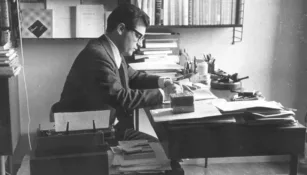CONTRIBUTI / 3 / Dennis Pohl /
Although the discourse on the Anthropocene started around 15 years ago, the question on the conditions of an architecture in that time frame has been widely disregarded. In which relation enter the anthropos and its constructed environment in the age of the Anthropocene? How is the anthropos regarded or made visible by and through its architecture? This essay elaborates on a twofold perspective the conception of téchne in the Anthropocene, in order to get a grasp over the relation of poíesis and praxis. By questioning the assumptions on which these relations in the Anthropocene thesis are build, allows to situate two different modes of subjectivity and environmental construction. On the one hand an Aristotelian model focusing a cause oriented, parceled notion of space in which the anthropos is the only causa efficiens shaping his environment and on the other a Platonic integrated model that does not separate poíesis from praxis and can be seen as a basis for a reciprocal relation between anthropos and environment. This philosophical framework serves as a basis for a comparative analysis of the two movies The Social Life of Small Urban Spaces (1980) from William H. Whyte and Playtime (1969) from Jacques Tati, where central aspects of the entanglements between the subject and its architectural machines are brought to light. Concepts of normality and monstrosity, patterns and breaks, universal and situated knowledges, parceled and non-identified spaces are juxtaposed, in order to highlight limits and potentials of an architecture in the Anthropocene.

